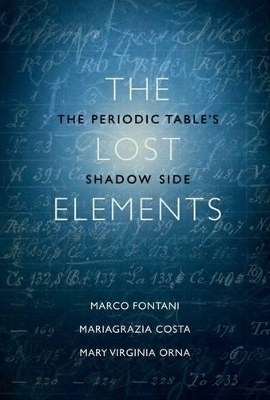
The Lost Elements
Oxford University Press Inc (Verlag)
978-0-19-938334-4 (ISBN)
In the mid-nineteenth century, chemists came to the conclusion that elements should be organized by their atomic weights. However, the atomic weights of various elements were calculated erroneously, and chemists also observed some anomalies in the properties of other elements. Over time, it became clear that the periodic table as currently comprised contained gaps, missing elements that had yet to be discovered. A rush to discover these missing pieces followed, and a seemingly endless amount of elemental discoveries were proclaimed and brought into laboratories. It wasn't until the discovery of the atomic number in 1913 that chemists were able to begin making sense of what did and what did not belong on the periodic table, but even then, the discovery of radioactivity convoluted the definition of an element further. Throughout its formation, the periodic table has seen false entries, good-faith errors, retractions, and dead ends; in fact, there have been more elemental "discoveries" that have proven false than there are current elements on the table.
The Lost Elements: The Shadow Side of Discovery collects the most notable of these instances, stretching from the nineteenth century to the present. The book tells the story of how scientists have come to understand elements, by discussing the failed theories and false discoveries that shaped the path of scientific progress. Chapters range from early chemists' stubborn refusal to disregard alchemy as legitimate practice, to the effects of the atomic number on discovery, to the switch in influence from chemists to physicists, as elements began to be artificially created in the twentieth century. Along the way, Fontani, Costa, and Orna introduce us to the key figures in the development of the periodic table as we know it. And we learn, in the end, that this development was shaped by errors and gaffs as much as by correct assumptions and scientific conclusions.
Marco Fontani and Mariagrazia Costa both are affiliated with the Department of Chemistry at the University of Florence. Mary Virginia Orna is affiliated with the Department of Chemistry at the College of New Rochelle.
Table of Contents ; Part I. Before 1789: Early Errors and Early Elements ; Part II. 1789-1869: From Lavoisier to Mendeleev: The First Errors at the Dawn of Concept ; Part III. 1869-1914: From the Periodic Table to Moseley's Revolution: Rips and Tears in Medeleev's Net ; Part IV. 1914-1939: From Nuclear Classification to the First Accelerators: Chemists' Paradise Lost...(and Physicists' Paradise Regained) ; Part V. 1939 to the Present. Beyond Uranium, to the Stars ; Part VI. No Place for Them in the Periodic Table: Bizarre Elements ; Part VII. Modern Alchemy: The Dream to Transmute the Elements Has Always Been with Us
| Zusatzinfo | 55 illustrations |
|---|---|
| Verlagsort | New York |
| Sprache | englisch |
| Maße | 142 x 259 mm |
| Gewicht | 880 g |
| Themenwelt | Naturwissenschaften ► Biologie ► Biochemie |
| Naturwissenschaften ► Chemie ► Anorganische Chemie | |
| Naturwissenschaften ► Chemie ► Physikalische Chemie | |
| ISBN-10 | 0-19-938334-0 / 0199383340 |
| ISBN-13 | 978-0-19-938334-4 / 9780199383344 |
| Zustand | Neuware |
| Haben Sie eine Frage zum Produkt? |
aus dem Bereich


